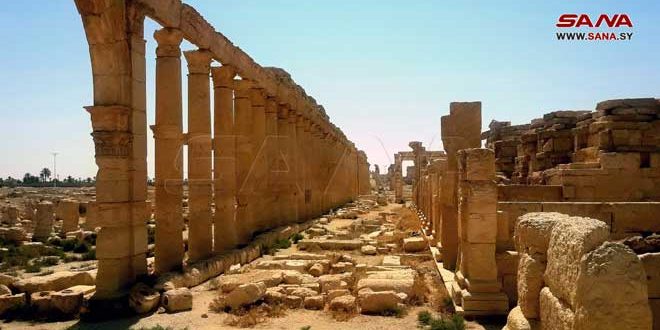Palmyra, (ST) – The ceremonies in the ancient city of Palmyra started on the first of April of each year to reach their climax on the sixth day of it. This day that enjoyed sanctity among the ancient Palmyrenes and is called the Good Day, where the ancient temple of Bel was honored.
Regarding the rituals of this feast in ancient Palmyra, the archaeological expert, Muhammad Khaled Al-Asaad, said to a SANA reporter that, the pilgrims used to go to the temple with their sacrificed cattle and enter it through a special corridor and they would rotate with their sacrifice and the god Ba’l. This god would be put on top of a camel, then they go to the altar to offer sacrifices.
After the sacrifices were cooked, food would be served to the invitees who were invited to these feasts by means of pottery invitation cards. Then everyone circles around the temple in conjunction with the influx of tens of thousands of pilgrims and worshippers to the courtyard of the Temple of Ba’l. Men and women would wear the finest clothes and the finest perfumes.
Al-Asaad points out that these rituals were carried out under the supervision of hundreds of priests, who wore their caps crowned with flowers and wore their white robes decorated with precious stones.
Al-Assaad added that these celebrations reach their climax on the sixth day of April, when the main ceremonial rituals of the feast would be carried out. This was called the Good Day.
These unique religious rituals, according to Al-Asaad, which were held in Palmyra in the month of April, were considered the beginning of the renewal of life in Palmyra and Eastern religious concepts in general, remained common and known until the advent of Islam.
It is noteworthy that the greatness and importance of the Temple of Ba’l in Palmyra, which was built by donations from the wealthy Palmyrenes in the second century AD, is related to the worship of the Ba’l, but which means in the ancient Akkadian language the god.
The temple also became one of the most important ancient religious buildings in the region and turned into a Byzantine church after the fall of the empire Romanian.
Raghda Sawas

